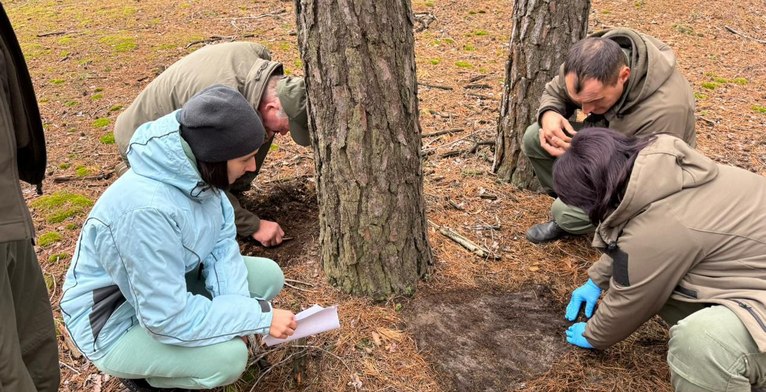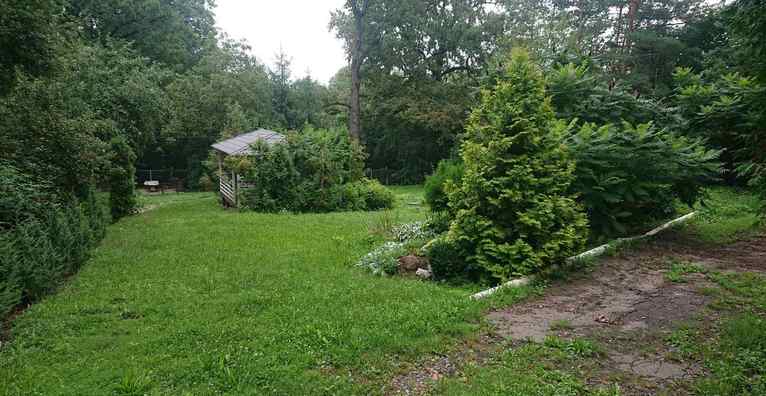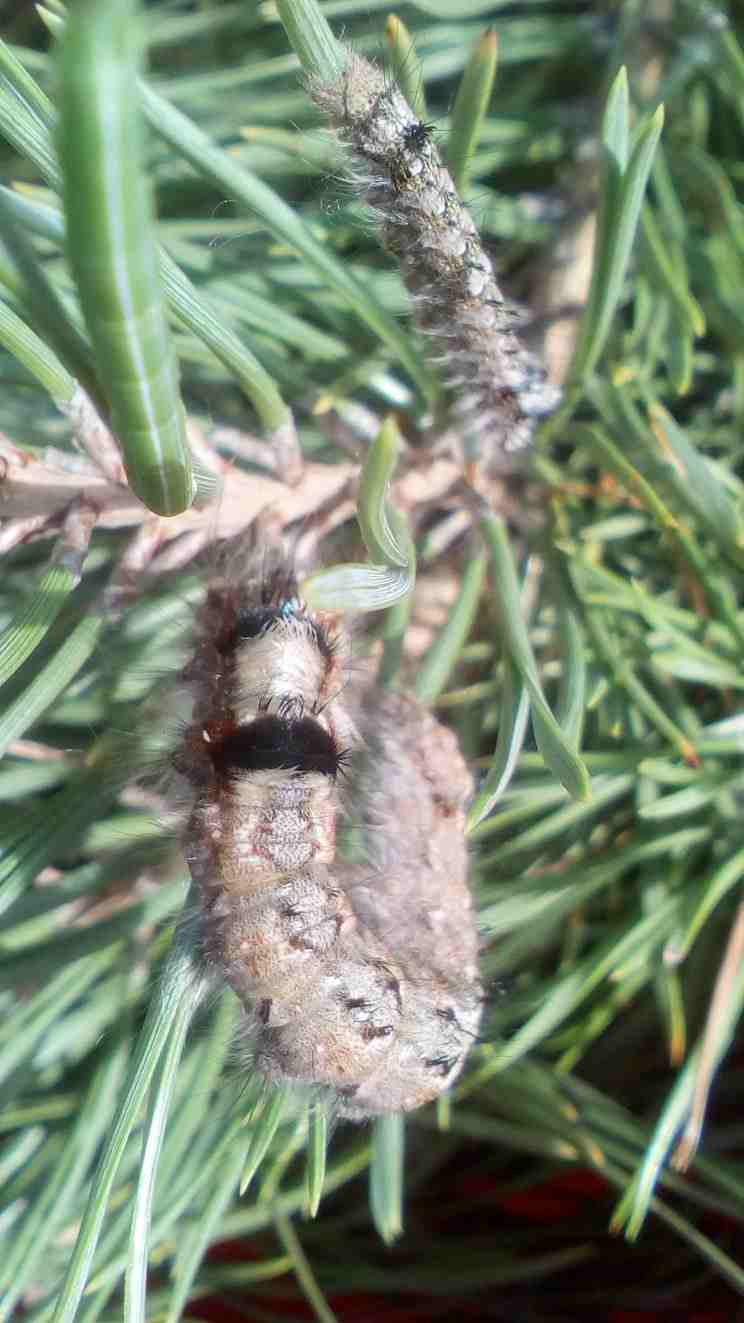Before starting the treatment of pine stands at the Lyman Forestry Enterprise of Donetsk Regional Forestry and Hunting Administration, an examination was conducted using the crown shaking method to assess the entomological canopy. The number of pine looper caterpillars is alarming. It is important to note that in many areas, the supply of food substrate is low. Therefore, even the observed number of pest caterpillars poses a high risk of severe needle defoliation.
Unfortunately, the presence of pine silkworm caterpillars was also confirmed. Their number and density increase the threat to pine stands. At the time of the survey, the pine silkworm caterpillars were in their third and fourth instars.








